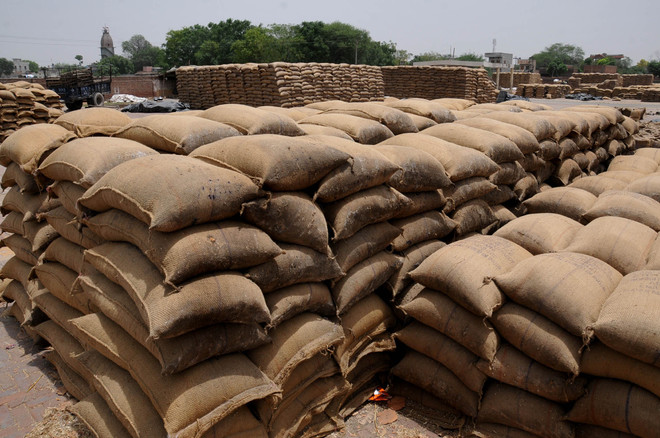FCI’s wheat & rice purchase slows on lower arrival, moisture, firm prices
By Puja Das
Wheat and paddy procurement by the Food Corporation of India (FCI) have been stagnant, due to lower arrivals, higher moisture content and firm prices.
In the case of wheat, despite the government kicking off procurement earlier than it’s scheduled on 1 April, in Uttar Pradesh, Bihar and Rajasthan, purchases slowed down significantly as arrivals, especially in northern states like Punjab, Haryana and Uttar Pradesh, dropped notably compared to last year. All-India arrivals of wheat have fallen nearly 35% year-on-year to 8.6 million tonnes (mt). This is attributed to higher moisture content present in the crop, delaying harvesting, a senior official told Mint.
As a result, wheat procurement by the government to date has been 36% lower than a year earlier.
As far as paddy or rice is concerned, procurement remains lower than the previous season due to higher paddy prices, driving farmers to sell their produce to private traders, the official added.
Paddy procurement during the 2023-24 kharif marketing season was 7% lower than the last season at 68.5 mt, while procurement of wheat till date in the 2024-25 rabi marketing season has been 7.1 mt against 11.1 mt during the corresponding period last year, according to the FCI and Central food grains procurement portal.
“Moisture content in crops in these states is higher because of cool weather and cloudy conditions. The crop is in the field. It is not being harvested,” the official said, seeking anonymity amid ongoing general elections.
“Low temperature and the overcast conditions are forcing wheat farmers to think that when the temperature increases the actual maturity of grain will be more than it is right now. This time of the year produce is very good, quantity-wise, and it will be better if they harvest a little later after a week when temperature rises so that maturing of wheat can yield good quantity. That is why the harvest is delayed by seven days in northern parts of India, specifically in Punjab, Haryana, western UP and adjoining areas of Rajasthan. Harvesting will be delayed by around a week in Punjab, Haryana and western UP.”
“In the case of paddy, procurement is not higher. The main reason for getting less rice (or paddy) is because prices are hovering higher in the market than MSP (minimum support price),” the official said.
As per the agriculture ministry’s Agmarketnet data, common non-basmati rice in key markets of Chhattisgarh, Kerala, Andhra Pradesh, Telangana, Bihar and West Bengal is selling for ₹2,195-2,484 per quintal against the MSP of ₹2,183 a quintal (for 2023-24 Kharif common variety).
However, lower procurement of paddy or wheat is unlikely to create trouble for the government in terms of maintaining buffer stocks and intervening in the market if required, the official said.
“We are quite confident of meeting our target wheat procurement of 30-31 mt. Earlier, the prices were higher. Now the prices are coming down with arrivals in the market. So, our procurement will increase.
Overall, our rice procurement is around 7-8% or 5 mt lower on year, which is a good sign. If we get 10 mt this year, it will be better. In KMS, last year by this time, we got 73.5 mt of paddy. This year we got 68.2 mt of paddy till 3rd April. This means around 5.5 mt of paddy is less. However, 68.2 mt translates to 45.8 mt of rice, which is higher by 5.8 mt than our yearly requirement. If 5.5 mt paddy or 3.7 mt rice is less procured, it is good because storage is a concern at this point,” the official added.
The FCI has 10.3 mt or wheat and 31.2 mt of rice available in its stock against the stocking or buffer norm of 7.46 mt and 13.5 mt, respectively as of 1 April.
Queries sent to the FCI, and the food and public distribution department remained unanswered at press time.
This article has been republished from The Livemint.

